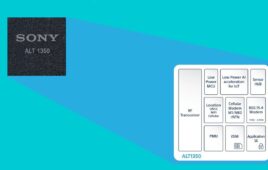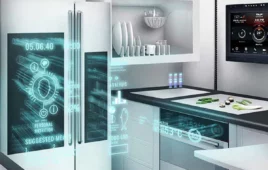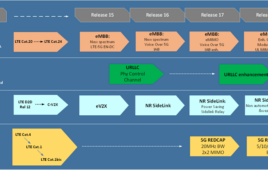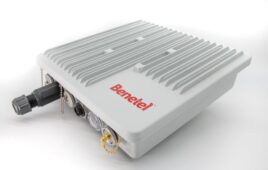BARCELONA – As per usual, Mobile World Congress played host to a flurry of handset releases. This year, the devices seemed to fall into two main categories: those that aimed to play on consumer nostalgia, and those that went for high tech specs.
Among those in the latter category were Sony’s stunning Xperia XZ Premium and LG’s new G6.
The ultra-thin Xperia XZ Premium is notable for being the first device to run Qualcomm’s latest Snapdragon 835 chip (aka, capable of downlink speeds of up to 1 Gbps) and comes with a stacked list of other specs. Among its features are a 5.5-inch 4K HDR display, a 19 mp main camera with new Motino Eye technology and super slow motion playback capabilities, a 13 mp selfie camera, and 64 GB of storage expandable up to 265 GB via an SD card.
Sony also released a smaller 5.2-inch Xperia XZs that comes with a full HD display, Predictive Capture camera, super slow motion playback, and the same camera specs as its bigger sibling. Both devices also come packed with Android Nougat. What’s different is its guts – the XZs will run Qualcomm’s Snapdragon 820 processor, and comes with just 32 GB of storage and a smaller battery.
The Xperia XZs will be available in April in Ice Blue, Warm Silver, and Black, while the Premium model will hit shelves sometime in the spring in Luminous Chrome and Deepsea Black.
LG also went high tech and big screen with its G6 smartphone. The device boasts a 5.7-inch screen with only the thinnest of borders framing the display. The FullVision display has an 18:9 aspect ratio, QHD resolution and Dolby Vision. The G6 also includes a dual 13 mp rear camera with a 125-degree wide-angle lens, and a 5 mp selfie camera equipped with Auto Shot and Gesture Shot features. The device is also dust and water resistant, runs Android Nougat on Qualcomm’s Snapdragon 821 processor, offers 32 GB of storage expandable up to 2 TB, and a 3,300 mAh battery with wireless charging.
But there are two other notable things about the G6: the inclusion of Google Assistant, and the fact that the phone is the first device compatible with Sprint’s HPUE technology.
The G6 will go on sale early next month in South Korea, and is expected to hit shelves stateside sometime in April.
Nokia and BlackBerry also came out with new handsets at the show, though these seemed to take aim more at consumer nostalgia than the latest and greatest specs.
HMD Global came out with three new Nokia-branded Android smartphones – the Nokia 6, Nokia 5, and Nokia 3 – as well as an updated version of Nokia’s classic 3310 handset.
The first three devices will all come with Android Nougat and, like the G6, have Google’s Assistant baked in. The standard 5.5-inch Nokia 6 will include Dolby’s Atmos sound system for enhanced entertainment at 229 Euro, while an Arte Black Limited Edition of the device will offer 64 GB of storage and 4 GB of RAM for 299 Euro. The Nokia 5 will feature a 5.2-inch IPS HD display, Qualcomm’s Snapdragon 430 processor and Adreno 505 graphics processor for 189 Euro. And the Nokia 3 will come with a 5-inch screen and 8 mp front and back cameras for 139 Euro.
But the real star of HMD’s show was the reborn Nokia 3310, which retains the old T9 keypad and mini-screen in a host of new colors including Warm Red and Yellow in addition to the standard Dark Blue and Grey. And as the classic brick was, the 3310 remains old faithful with 22 hours of talk time and a month of standby time. For those looking to take a trip down memory lane, the new 3310 will be available for 49 Euro.
TCL Communication also went retro with its new BlackBerry handset, the KEYone. As the name implies, the device brings back BlackBerry’s physical keyboard alongside a 4.5-inch display. The new smart keyboard responds to gestures to mimic the old track pad. The KEYone will run on Qualcomm’s Snapdragon 625 processor and Adreno 506 GPU, and will come with Quick Charge 3.0 technology for its 3,505 mAH battery. The device also has a 12 mp rear camera and 8 mp selfie camera.
The KEYone will be available in April and will be priced at around $550.




